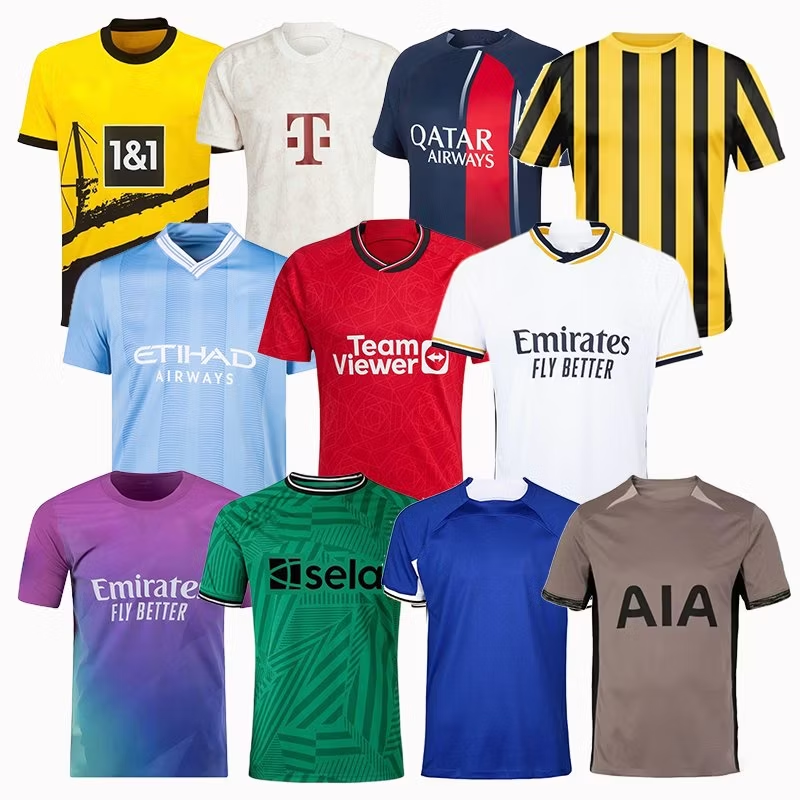In the colorful world of Nigerian fashion and everyday speech, one curious linguistic shortcut stands out: the tendency to call almost every piece of clothing worn on a man’s upper body a “shirt.”
Whether it’s a polo, a T-shirt, a kaftan, a jersey, or even a suit jacket, the term “shirt” is used generically and indiscriminately.
While this habit is rooted in cultural context and convenience, it creates a comical mismatch between clothing and its proper name.
This article seeks to decode this confusion by highlighting the various types of men’s tops, what they are correctly called, their uses, and how they differ from each other.
If you’ve ever been guilty of calling everything a shirt—or been baffled by the Nigerian “shirt syndrome”—this guide is your fashion literacy upgrade.
The Classic T-Shirt: Comfort Redefined
A T-shirt is arguably the most basic yet most misunderstood men’s top in Nigeria. This casual, round-necked or V-necked garment made of cotton is a staple in wardrobes across the world. However, in Nigeria, it’s often simply referred to as a “shirt.” This label may suffice in casual conversations, but in fashion, it’s just plain wrong.
The T-shirt was originally worn as an undergarment by American soldiers in the 20th century. Its lightweight and breathable design made it suitable for layering or standalone wear in hot weather.
Today, T-shirts are blank canvases for self-expression, often featuring slogans, logos, or artworks. The correct term is T-shirt, not just “shirt.”
The Polo Shirt: Where Casual Meets Class
When a Nigerian says, “I want to buy a shirt” and picks a collared, short-sleeved top with a two- or three-button placket, they’re referring to a polo shirt. This classic wardrobe piece bridges the gap between sporty and smart. Its origins can be traced to tennis legend René Lacoste, who designed it for better movement during matches in the 1920s.
While it’s still used in sports like golf and tennis, the polo shirt has become a go-to for casual Fridays at work or semi-formal occasions.
Unlike the T-shirt, the polo has a defined collar and adds a more polished touch to a casual look. Its proper name is polo shirt, and it is distinct from both dress shirts and T-shirts.
The Dress Shirt: For Suits and Serious Business
The dress shirt, or formal shirt, is what most Western cultures refer to when they say “shirt.” It features long sleeves, a stiff collar, and a button-down front and often comes in solid colors or subtle patterns. It is meant to be tucked into trousers and is typically worn with a tie and jacket in formal settings.
In Nigeria, this is the most acceptable use of the word “shirt,” yet it still competes with many other garments in the “shirt” category. Whether worn under a suit or as a standalone piece, the dress shirt commands elegance and authority. Men often wear it to work, for interviews, or to church.
The Kaftan and Senator Top: Nigerian Royalty in Fabric
Moving from the Western to the traditional, we come to garments like the kaftan and senator top, which are often lumped into “native shirt” in Nigeria. The kaftan is a long, free-flowing top usually worn with matching trousers.
The senator top, inspired by the distinguished style of Nigerian politicians, especially from the southeast, is a slightly shorter, more fitted alternative that often features embroidery and intricate designs.
These traditional garments are made from cotton, brocade, guinea, or silk materials. They are perfect for weddings, religious ceremonies, or national holidays. Instead of calling them “shirts,” it’s culturally enriching to refer to them correctly as kaftans or senator tops.
Bùbá: The Yoruba Pride
The bùbá is a traditional Yoruba top, typically worn with sókòtò (trousers) and sometimes an agbádá (a flowing outer robe). It is loose, comfortable, and often worn during special family gatherings, festivals, and ceremonies. The bùbá has been part of Yoruba identity for centuries and is steeped in cultural significance.
Despite its historical prestige, the bùbá is often called “shirt” in urban Nigerian conversations. Using its real name—bùbá—restores its cultural dignity and differentiates it from Western-style tops. Pairing it with traditional beads and a cap completes the look of regal masculinity.
The Dansiki and Agbádá Inner Top: Foundations of Grandeur
Underneath the majestic agbádá robe is an often-overlooked but essential garment: the dansiki, or agbádá inner top. This garment is usually simple in design, short- or long-sleeved, and made to match or complement the agbádá’s fabric.
Unfortunately, many Nigerians call this the “shirt inside agbádá.” While functionally correct, this phrase robs the garment of its fashion and cultural value. Using the right name—dansiki—not only enriches one’s vocabulary but also honors traditional Yoruba tailoring and textile art.
The Suit Jacket: Formalwear Royalty
Perhaps the most grievous misuse of the word “shirt” in Nigeria is when men refer to a suit jacket as a “coat shirt” or just “shirt.” The suit jacket is a structured, tailored garment designed to be worn as part of a matching set with trousers and sometimes a waistcoat.
The jacket’s construction includes shoulder pads, lapels, buttons, and pockets, all tailored for a dignified silhouette. It is inappropriate to call this a shirt. Its function, material, and construction all differ dramatically from anything that could be rightly called a shirt.
The Blazer: The Versatile Cousin
Closely related to the suit jacket is the blazer. While it shares similar tailoring, the blazer is more versatile and can be worn with trousers of a different fabric or color. It can be dressed down with a T-shirt or dressed up with a tie.
In Nigeria, however, you’ll often hear people refer to a blazer as a “jacket shirt” or simply “coat.” The correct name—blazer—helps one differentiate between formal suit jackets and more casual smart options.
The Waistcoat or Vest: The Inner Gentleman
Often seen in three-piece suits or traditional outfits like agbádá, the waistcoat (British term) or vest (American term) is a sleeveless, button-down garment worn over a shirt and under a jacket. It adds elegance and structure to an outfit.
It’s commonly called “the small coat inside” or “inner shirt” in Nigeria. While descriptive, this usage oversimplifies its role in fashion. The correct term—waistcoat—defines it as a standalone garment with its own fashion rules.
Sweatshirts and Hoodies: Streetwear Essentials
In Nigeria’s cooler regions—or during harmattan—you’ll see men in thick tops referred to as “thick shirts” or “warmers.” These are usually sweatshirts or hoodies, designed for warmth and style.
The sweatshirt is a collarless, long-sleeved pullover made from heavy cotton or fleece. The hoodie is similar but comes with a hood and often a front pouch pocket. These items are staples in casual and streetwear wardrobes globally. Calling them “shirts” neglects their functional identity as outerwear.
Tank Tops and Singlets: Layering Basics
In Nigeria, the term “singlet” is universally understood, but the context sometimes varies. A tank top is a sleeveless, usually cotton garment worn for gym activities or lounging. When worn underneath another top, it becomes an undershirt.
Some refer to them as “body shirts” or “inside shirts,” but their proper names—tank top and undershirt—depend on use. These simple tops serve both as practical innerwear and fashion pieces for hotter climates or gym sessions.
Tunics: The Smart-Long Shirt
The tunic is a long, collarless, or minimally collared shirt, often featuring embroidery or minimal designs. It’s popular in men’s fashion for occasions that call for style without a tie or jacket.
In Nigeria, tunics are often lumped under the senator or kaftan category or simply called “long shirts.” But calling them tunics helps differentiate them from traditional Nigerian styles or formal Western wear.

Jerseys: For Fans and Footballers
Every Nigerian man owns at least one jersey, whether it’s Chelsea, Real Madrid, Barcelona, or the Super Eagles. Unfortunately, these are still called “shirts” or “football shirts” in casual conversation.
While technically a shirt, jersey is the correct term. It refers to athletic wear made from moisture-wicking materials, designed for sports or fan wear. A jersey is not a T-shirt, and knowing the difference matters for both fashion and football.
Cardigans: The Gentleman’s Sweater
Cardigans are knitted, open-front sweaters, often buttoned or zipped, that provide warmth and layering versatility. In Nigeria, they’re sometimes called “sweaters” or “knitted shirts.”
However, the term cardigan distinguishes them from pullovers or sweatshirts. They are perfect for layering over shirts in cooler weather or for adding a scholarly, gentlemanly look.
Why Getting It Right Matters
Knowing the right names for men’s tops isn’t about showing off; it’s about respecting fashion, culture, and communication. The “shirt” generalization might work in informal settings, but in business, fashion, or international discussions, proper terminology adds clarity and sophistication.
Correcting these terms in speech and shopping can also help vendors, tailors, and stylists understand their clients better. When someone says, “I want to buy a shirt,” and they mean a jersey or a kaftan, miscommunication can easily occur.
From Confusion to Clarity
The diversity in men’s tops—from T-shirts to tunics, kaftans to jerseys—is vast and rich. Lumping them all into the word “shirt” does a disservice to their individuality and function. By learning and using the correct terms, Nigerians can align cultural pride with fashion literacy.
So, the next time you’re picking an outfit or shopping for new clothes, take a moment to name that top correctly. Not all shirts are created equal, and not all men’s wear should be called one.

